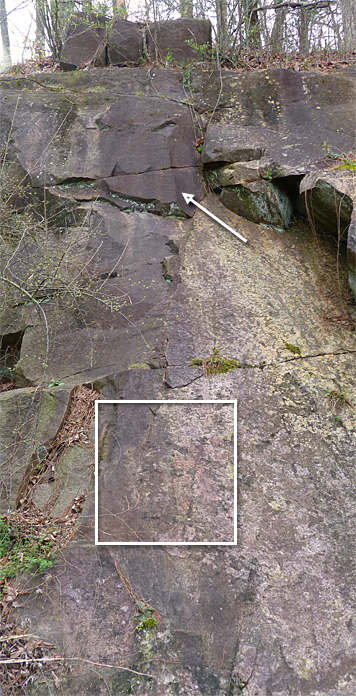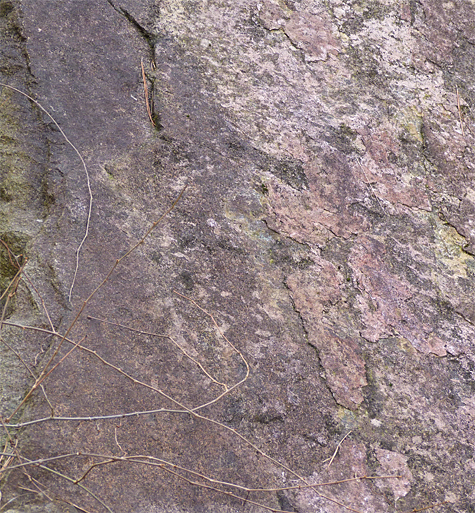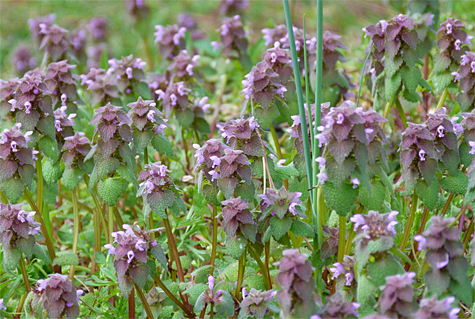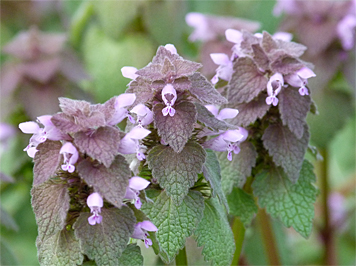A short while ago my daughter asked me how to spell puce. She had asked her mother what her least favorite color was to which her mother replied “puce.” I had heard the word before and thought it a color residing somehwere in the red part of the spectrum. As far as the spelling of the word, I told her that it sounded as though it was spelled either p-u-e-s-e, or p-u-e-c-e, but I had to look it up to be sure. It was, and is, spelled P-U-C-E just as my daughter thought it was spelled.
Once I get something in my head it doesn’t easily depart. The question now is, what color is puce and where did the name come from? I spent a good amount of time researching puce. Here’s some of what I found.
It seems there is much confusion as to exactly what puce is, as far as the color is concerned. The word, when describing a color is often used with a modifier, such as grape puce, tobacco puce, or even dark puce. It’s often described as being a pink-brown or red-brown color. And, it seems to be one of the most desirable colors for bottle collectors. But, many people have different ideas as to precisely what color it is. Some even think it a shade of green, but we won’t get into that.
The following picture is of Judi Dench as Lady Catherine de Bourgh as she appeared in “Pride and Prejudice.” She is said to be wearing a puce dress.

The dress in the photo seems much darker than other representations of puce that I’ve been able to find (Google “puce,” a lot of images will appear before you), but read on.

To the right is the color puce represented as a Hex Number (#cc8899) and RGB Decimal (204, 136, 153). It appears that the puce in the photo and the swatch at right are quite different. But, if you look at the bottom right corner of the “Judi Dench” photo where the light strikes the dress, it’s not very different at all, a little darker but not by much. Whether you buy that or not, it’s an interesting picture of Judi Dench and we can reference the photo later.
But first, let’s get the etymology out of the way. The word puce means flea in the French language. And, according to what I’ve read, the name for the color derives from the blood stains left behind on white linen or sheets by the little blood suckers. Puce is the name given to the color of those stains. The earliest usage of puce as a color comes from the 14th century. There’s much more to discover about puce, the word, the color, the flea, but let’s get to my main point.
What does all of this have to do with life here at the Museum? Well, we here at the Museum sit upon some very old rock, an intrusive sill which lies within the Deep River Triassic Basin. It’s under the various buildings here at the Museum and under the paths that we walk. It’s even part of some of the exhibits. The rock that makes up the sill is over 200 MYO. Much of it is exposed thanks to quarrying efforts which ceased in the late 1930s, and is particularly evident in the Red Wolf and Black Bear Enclosures. The rock is variously stained with clay, lichens and minerals.
Next to the main viewing area of the Black Bear Enclosure is a section of rock stained a color that I’ve been trying to put a name on for several years now. I’ve been referring to this rock’s color as maroon, burgundy, purple, or pinkish depending where on the rock you look, but I’ve never really settled on one specific color. For instance, when describing the rock to someone I might say, “…the maroon, or burgundy colored rock,” or “Do you see the purplish, or pink-purple rock there…” but I’ve never been quite satisfied with that description of the rock’s color.

I may have solved my quandary. I can now put a name on the rock, the color of the rock. I will call it puce. I’ll still have to use modifiers, but at least I’ll be able to call it something. I can call the darker, upper portion of the rock “Wine Puce,” or maybe “Dame Judi Puce” and the lower area just plain puce, or perhaps “Intrusive Puce.”
I can call this whole section of rock “Puce Rock.” Somewhere on that particular section of rock is the color puce, depending upon what it is that you feel puce is, whether the dark upper hue or the lower lighter shades or somewhere in between, it’s there somewhere.
I guess though, that that doesn’t really solve the problem, I’ll still have to use a modifier of some sort. And, what’s worse, although some people will already have heard of puce, I’ll probably have to spend a great deal of time explaining to the rest of the folks what it is, how it got its name and what color it is, if that can be done at all.
It is, however, much more interesting than simply calling the rock purple, or maroon, or burgundy, or dark pink….

By the way, take a look at the pictures of the mints below.


Do you see any puce in these photos?
———
I originally had the two photos of the mints labeled Heal-all. I’ve been corrected by Richard Stickney of the Butterfly House as to their true name, Red or Purple Deadnettle (Lamium pupureum). Or is it Puce Deadnettle?
Thanks Richard.
My bedroom is mauve puce . A mix of colors that will be hard to duplicate. I would be inable to label it without your helpful descriptions. Thank you. Dixie
My pleasure, Dixie, glad to be of assistance.
I love this post. It’s a horse of a different color, I’d say…
I thought you’d like it!
Thanks,
I had a Weimaraner years ago, and one day someone asked me, “What color is that dog — burgundy?” I could never figure out why he picked burgundy to describe the dog’s grayish color, but now I know. Dan the Weimaraner was gray puce! Thanks, Ranger Greg, and thanks to your daughter.
I would never have thought of a Weimaraner as being puce, but now that you mention it, yeah, I’ve seen some “gray puce” Weimaraners.